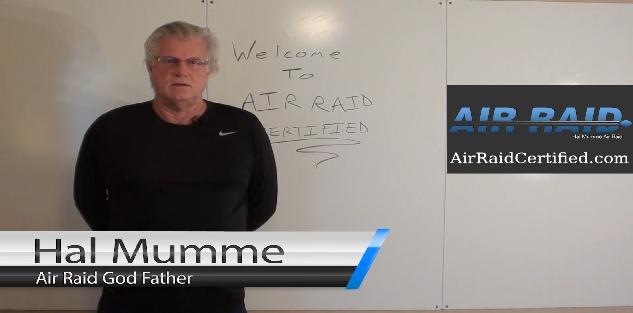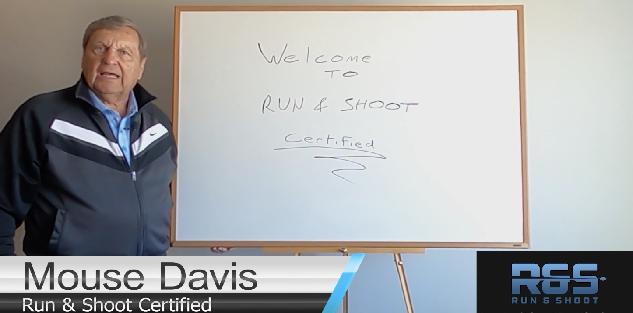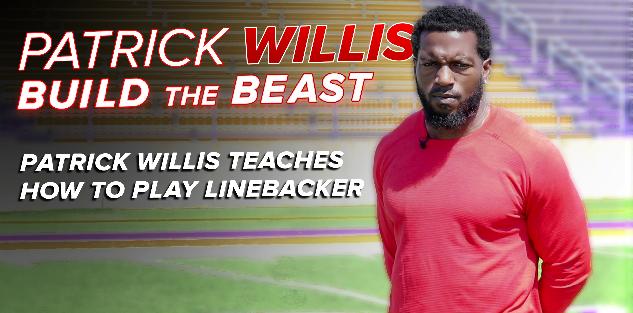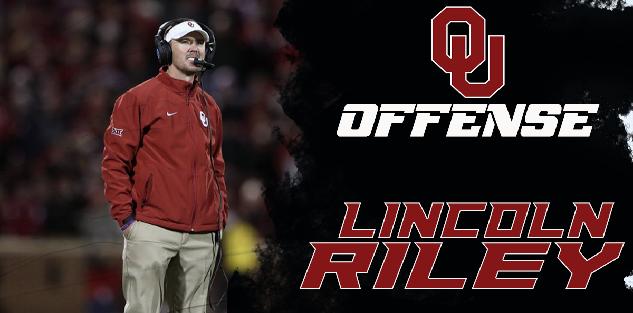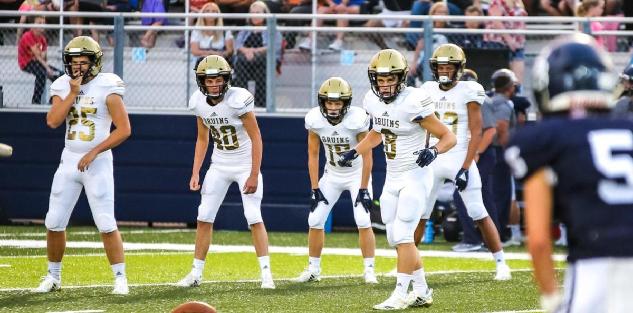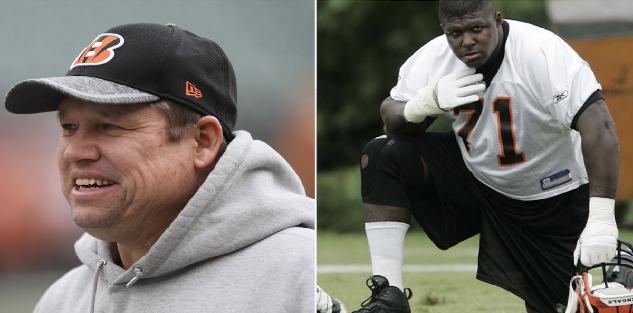Featured courses
- Jim Thorpe Award Winner Jahdae Barron’s 4 Drills for Dominating Receivers by Grant Young
- 5 Tips to Improve Your Football Game Plan by Andrew Dohre
- Game Changer RPO Football : Wing-T Offense by Andrew Dohre
- Mastering the Pass Rush: Expert Drills and Progression Tips from UCLA’s Coach Ikaika Malloe by Andrew Dohre
- 3 SPO’s to Protect the Passing Game and create opportunities in space by Keith Grabowski
- The Art of Running the Corner Route- Coaches and Players Prespectives by CoachTube Staff
- Evolve your Defense with Quarter, Quarter Half to Stop RPO by Coach Grabowski
- Top 10 College Football Players to Watch for in 2022 by Alec Burris
- Clemson vs. Syracuse Matchup of the Week by Keith Grabowski
- Sprint Out Passing: Move the Pocket for Success by Keith Grabowski
- Unlocking the True Potential of Your Special Teams Play by Keith Grabowski
- The Most Important Components of Air Raid by Keith Grabowski
- 4 Plays that Benefit from Bunch Formations by Keith Grabowski
- 3 Third Level RPOs for Explosive Plays by Keith Grabowski
- The Role of the Screen Game in Explosive Offense by Keith Grabowski
- The Chess Match: Win on the Perimeter (Part 1) by Coach Grabowski
- Unlocking the Power of Gap Manipulation to Limit Explosive Plays by Keith Grabowski
- TCU’s 3-3-5 and facing bigger personnel by Keith Grabowski
- Elevating Your Team: Strategies from Coach Matt Ruhle by Keith Grabowski
- 7 RPO’s for your playbook by Coach Keith
- Beyond Quarters - The Need For Additional Coverage Concepts by Keith Grabowski
- 5 Core Offensive Priniciples for a Winning Football Formula by Keith Grabowski
- Win Downfield - Attacking Different Areas Deep with 3rd Level RPO by Coach Grabowski
- WAKE FOREST’S UNIQUE RPO GAME by Keith Grabowski
- Adjustments to Defeat the Tite Front by Keith Grabowski
- Attack Defenses with The Versatile Y-Cross Concept by Keith Grabowski
- Play Action is a Cheat Code! - 5 Play Action Concepts to Increase Your Expected Points by Keith Grabowski
- Question from Rutgers OC - What does your offense say about your coaching? by Keith Grabowski
- Gap Schemes vs. Tight Fronts, Play Action Shots and Misdirection by Coach Grabowski
- Setting up your young Qb for success by Keith Grabowski
- The Hot Gap plus 3 Gap Scheme RPO’s to Stress the Defense by Keith Grabowski
- How Football Coaches Can Build A Game-Changing Special Teams Unit by Grant Young
- Master the Art of Quick Passing for High Completion Percentages by Keith Grabowski
- How to Be an Influential Football Coach by Grant Young
- How to Maximize Tackling Efficiency within Scheme by Keith Grabowski
- Offensive Drills of the Week by Keith Grabowski
- How a Stoplight Can Make Your Fly Sweep Takeoff by Keith Grabowski
- Keep your Drills Fresh and Your Skills Developing - Offense by Keith Grabowski
- Coach Kevin Kelley, Outside The Box by Keith Grabowski
- Want your defense to get off the field after third down? Sims and Creepers are the answer! by Keith Grabowski
- Create More Turnovers with Circuit Training & Win More Games! by Keith Grabowski
- Devastate the Defense with TE RPOs by Keith Grabowski
- Red Zone adjustments by Keith Grabowski
- CoachesClinic.com Featured Matchup: Cincinnati vs Indiana by Caleb Hopkins
- 3 NFL ZONE RUN PLAYS FROM WEEK 7 by Alex Kirby
- Sonny Dykes Teaches You How to Put Together an Offense by Coach Grabowski
- FIVE REASONS TO RUN THE 3-3 DEFENSE by Alex Kirby
- Getting Your Defense Ahead - 1st and 2nd down Pressures from Noah Joseph by John Grayson
- Chad Morris Teaches How To Builds an Offense by Coach Grabowski
- Get Your Offense a +1 With the QB Run Game by Coach Grabowski
- Are You Causing a 14 Point Turnaround...Against Your Team? by Coach Grabowski
- Learn How to Improve Your Offense with USC’s “Harrell Effect” by Coach Grabowski
- The Power of Influence - Rick Jones, Mizzou by Coach Grabowski
- Easy QB Runs to Drive Defenses Crazy by Ryan Eisenberger
- How many different ways can you make the defense cover everyone? by Ryan Eigenberger
- Win Passing Downs with Creepers and Sims by Coach Grabowski
- Always have a plan to play your best 11 by Keith Grabowski
- Dominate the Defense with Double Teams by Coach Grabowski
- Buffalo OC teaches his model for game planning by Keith Grabowski
- Put your 3 Deep Coverage in a Better Position with Zone Alert Rotations by Coach Grabowski
- 5 Keys to Using Trick Plays by Coach Grabowski
- Learn from 'Juggernaut' Offense by Keith Grabowski
- Bob Wylie - Offensive Line Breakdowns by Coach Grabowski
- Utilizing the Hybrid Linebacker to take away Offensive Advantages by Coach Grabowski
- Always have a plan to play your best 11 by Keith Grabowski
- Coachesclinic.com Featured Matchup: #6 Oklahoma vs #21 Texas by Caleb Hopkins
- Easy for You - Difficult for Them Adjustments by Keith Grabowski
- Coachesclinic.com Featured Matchup: Davidson College vs Presbyterian by Caleb Hopkins
- Week 5 National High School Football Rankings by Keith Grabowski
- Protecting Aaron Rodgers (and your own QB) by Caleb Hopkins
- Defensive Drills of the Week by Keith Grabowski
- Woo Pig - Add a wrinkle with these Arkansas Downhill Run Variations by Keith Grabowski
- Coachesclinic.com Featured Matchup: #7 Cincinnati vs #9 Notre Dame by Caleb Hopkins
- Offensive Drills of the Week by Keith Grabowski
- Coach Jason McEndoo Teaches #12 Oklahoma State’s Top Running Play by Keith Grabowski
- Adjustments - Attach Screens to your best plays, defend star receivers, & movement to stop the run by Keith Grabowski
- Coachesclinic.com Featured Matchup: Army vs #16 Wake Forest by Caleb Hopkins
- How To Implement A Running-Back-By-Committee Scheme by Brandon Ogle
- How To Become The Most Feared Offensive Lineman In Your League by Chrisian Benavides
- Wylie, McNally and Alexander Key Coaching Points on the Wide Zone Play by Keith Grabowski
- #21 Coastal Carolina’s play that is a whole offense within itself by Keith Grabowski
- 4 Plays that Benefit from Bunch Formations by Keith Grabowski
- Best Mesh Concept Plays by Ron McKie
- Forming Families For Football by Darryl Page
- Top 5 Things Coaches Should Strive To Get Out Of Spring Camp by Darryl Page
- 10 Tips To Know Before Attending Football Camps by James Breland
- Offensive Line Drills by Rick Bouch
- You’re a captain, now what? 5 Tips to bring your team together and establish yourself as a true leader by Lester Crafton
- COACHING THE 4-2-5 DEFENSE VS SPREAD TEAMS by Alex Kirby
- Gifts From Grinch by Coach Grabowski
- A Package to Help You Win Mid to Late Season by Coach Grabowski
- The Future of American Football: How to Run the Spread Offense by Coach Scott
- Chris Ash teaches Longhorn Tackling by Coach Grabowski
- The misunderstood Yet Powerful Run Scheme - Duo by Coach Keith
- THE GUS MALZAHN QUARTERBACK COUNTER PLAY by Alex Kirby
- FIVE TIPS FROM GUS MALZAHN ON HOW TO BUILD YOUR PLAYBOOK by Alex Kirby
- LITTLEST KID ON THE FIELD TRUCKS LINEMAN – YOU CAN’T MAKE THIS STUFF UP by Jacob
- HOW TO MAXIMIZE YOUR OFFSEASON FOOTBALL TRAINING by Dominic
- BAD CALL, GREAT COACH: THIS IS WHY PLAYERS LOVE PETE CARROLL by Jacob
- How to Get Recruited for Collegiate Sports by Brandon Ogle
TCU’s 3-3-5 and facing bigger personnel
Offensive trends are becoming clear and one thing is inevitable, you will face bigger personnel (12, 21, 22, 23).
There was much skepticism about a defense designed to stop the spread of the Big 12 being able to handle a punishing Big Ten run game.
The first play momentarily confirmed that, but at least for the rest of the half, the Frogs were able to neutralize the massive Michigan OL and quickly fit their gaps and force the ball lateral where the Frogs’ speed could take over holding Michigan to short gains or losses.
TCU's defense is built for speed and was able to slow down Michigan's power in the first half.
They were a bend but don’t break defense. While they gave up 221 yards, they were able to keep Michigan off pace holding them to 73 on the ground.
Of course, the scoreboard went crazy in the second half.
TCU Head Coach Sonny Dykes was pleased with how his team hung in. He said,
“Every time we started to get on our heels a little bit defensively, all of a sudden it’d be a three and out. We get the ball back on offense, score and put a little distance between us and Michigan.”
The Frogs were opportunistic in taking two interceptions back for touchdowns and that arguably was the difference.
Second half aside, there is a lot to learn from this game and the TCU defense. With a trend back to bigger personnel on offense, many of the defenses that sprang up to stop the spread are being attacked in different ways.
TCU defensive coordinator Joe Gillespie did some good things throughout the game and as Coach Dykes noted, the Frogs made stops when they were desperately needed.
Maybe “spread defense” is not dead, it just needs to evolve. The 3-3-5 is still a winning defense on all levels and as all good offenses or defenses are, it intends to maximize the talent available on any roster.
Linebacker coach at Iowa State Tyson Veidt explains why the Cylclones moved to the Odd Stack. It started with Coach Matt Campbell identifying the best talent that he wanted on the field. Coach Veidt tells the story as well as the benefits they see in playing the defense.
Like Iowa State, it’s probably easier to find the linebacker type than it is to find the bigger, dominating DL.
But what will that look like against big personnel? Iowa State has had to play those types of teams, especially in facing their instate rival Iowa every year.
In this 22-personnel play, the Cyclones use their speed and athleticism against a double-tight I formation to come up with the stop as Coach Veidt illustrates:
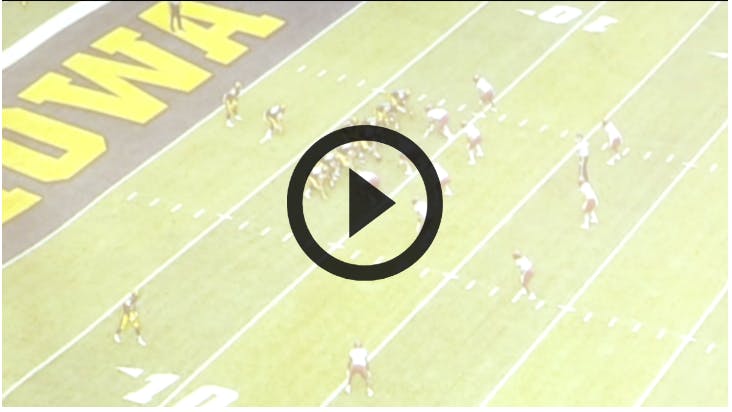
As you know, facing big personnel is nothing new to the 3-3-5 defense.
Mike Moon, head coach at Oxnard Pacifica, used the 3-3-5 to help his team to a CIF State Championship in 2019. He knows exactly what he is looking for in each position as he has certain criteria. He explains it here:

Coach Moon is also faced with facing 12 personnel. A formation becoming popular as more bigger offensive bodies make their way onto the field is a spread-wing formation. He explains how they align to defend it from the 3-3-5 here:
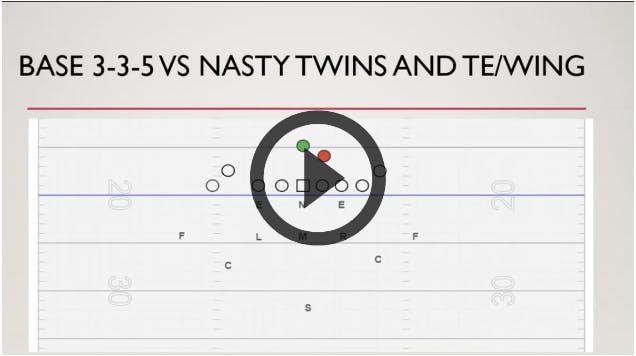
Rob Eggerling is the defensive coordinator at Southern Connecticut (NCAA D2) and uses the 3-3-5. He starts the design of his attack by defining a successful play. He identifies the five elements here:
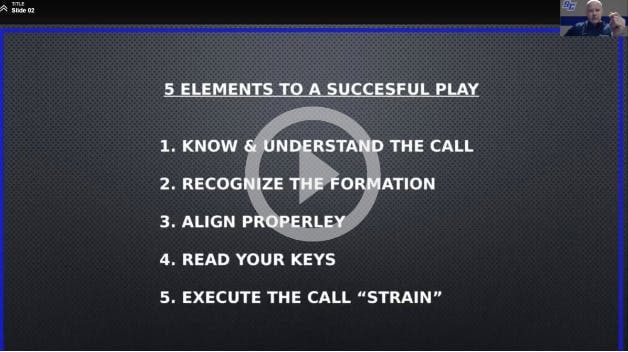
If you haven’t faced 21 in a while, you certainly need to prepare for it. More and more teams are going back to these sets even if only in a package. Here is how Coach Eggerling aligns against a 2-personnel Pro set:

Of course, any defense today has to be prepared to defend 11 Personnel. A team may present a spread set and then bring the tight end in. In this example, they play against a shift here and then redeclare their blitz. Coach Gillespie points out that once players declare their assignment, they keep it. They can redeclare against a shift, but motion does not affect it. This keeps everyone assignment sound:
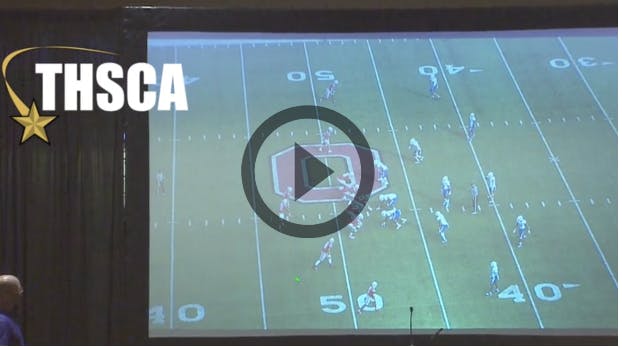
Looking back at last Saturday's game, there certainly was a lot of bend in the TCU defense. In a game of this caliber, teams will score and gain yards and come up with big plays. TCU came up with enough. They also provided an example of how to utilize athletic players and get them running and using their speed and quickness.
Whether the 3-3-5 is for you starts with understanding your personnel and putting them in positions to utilize their talent successfully. That is true no matter what defense you run.
We hope you took away some things from this game. The presentations of these coaches we highlighted can be found in a bundle here - Coaching the Dynamic 3-3-5 Defense.

